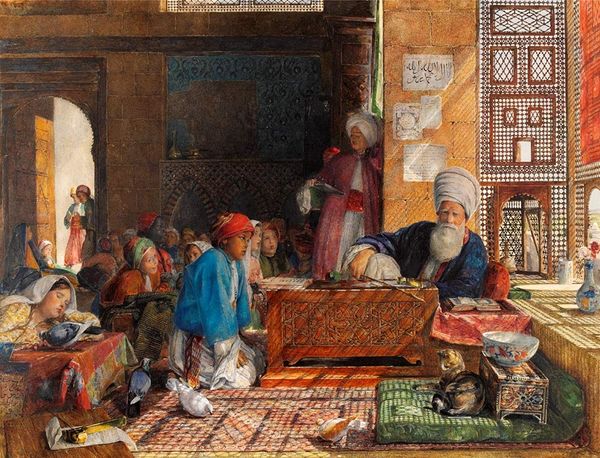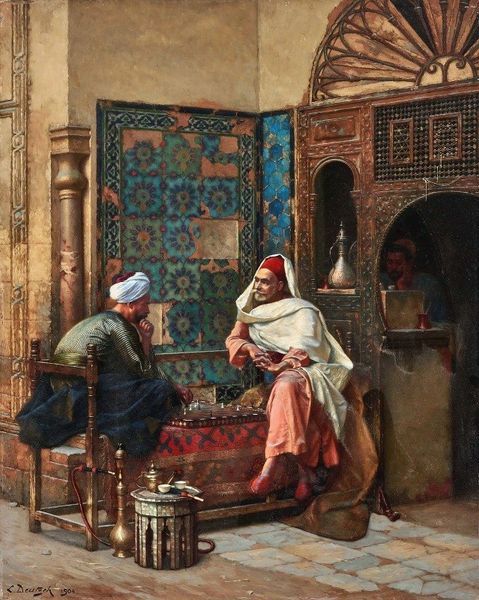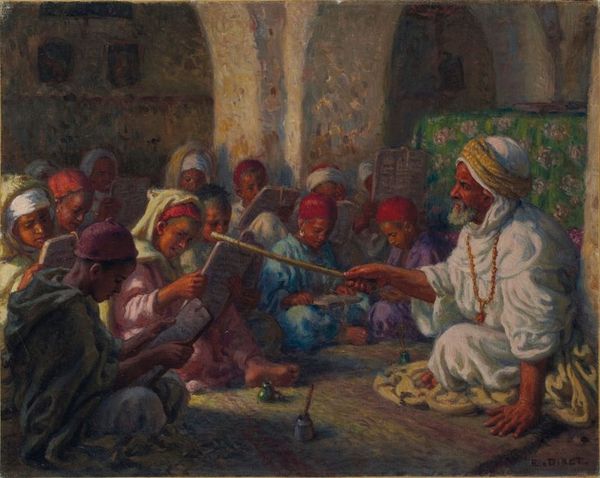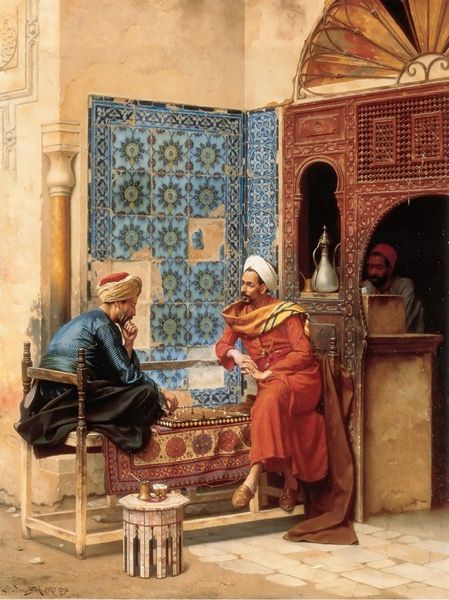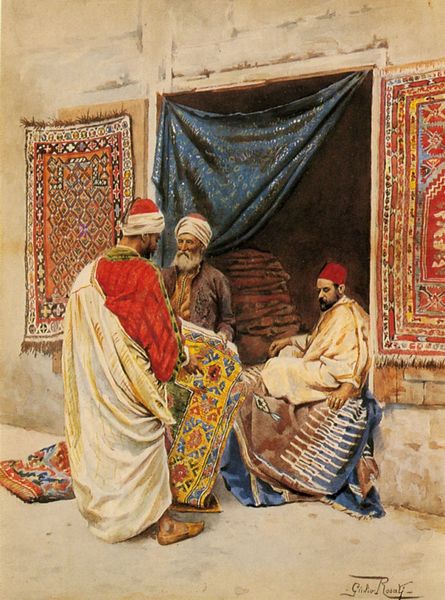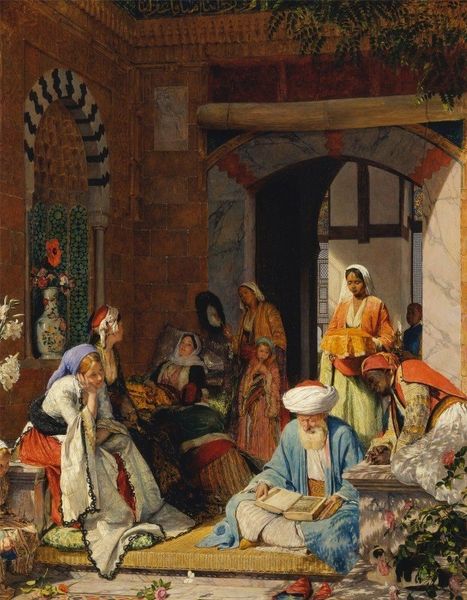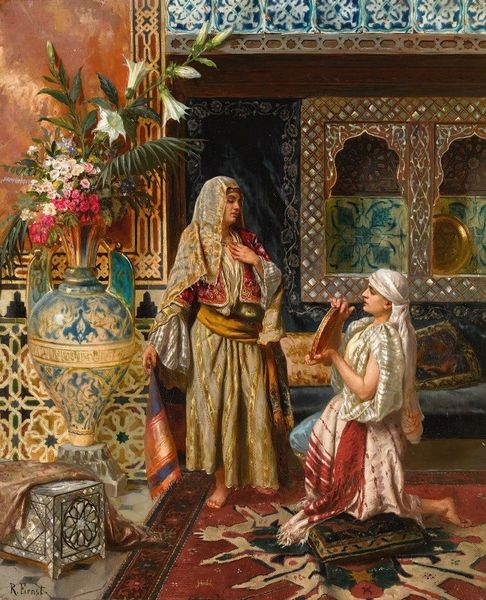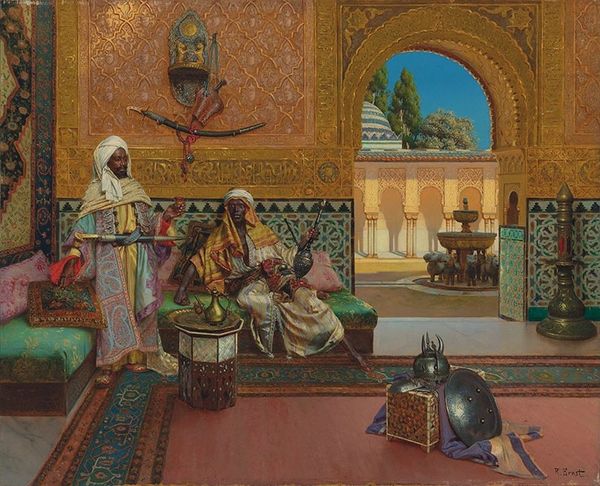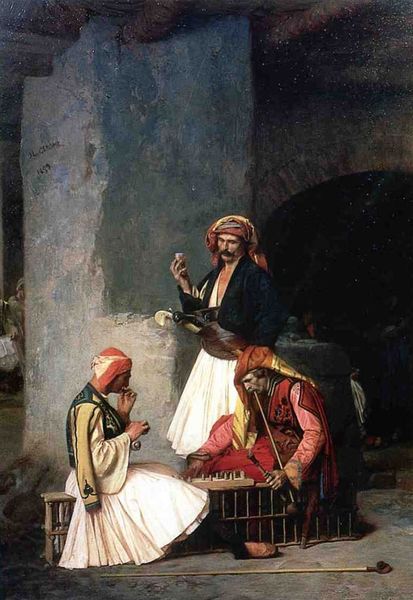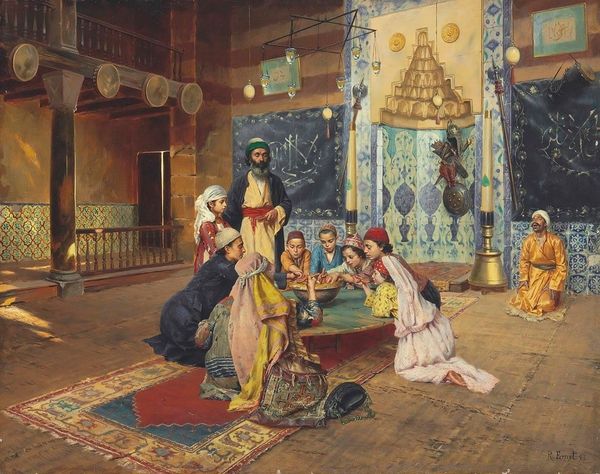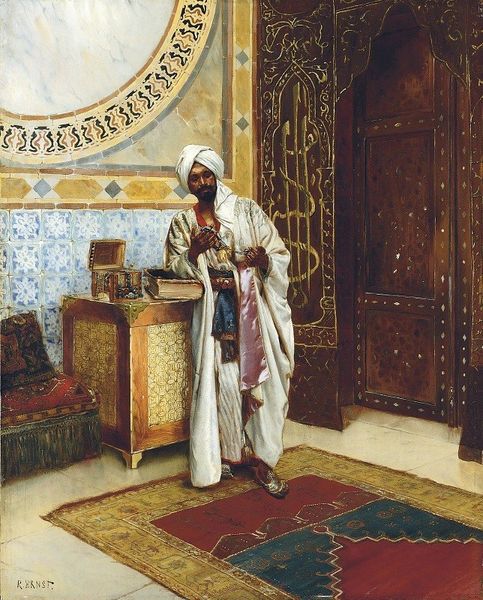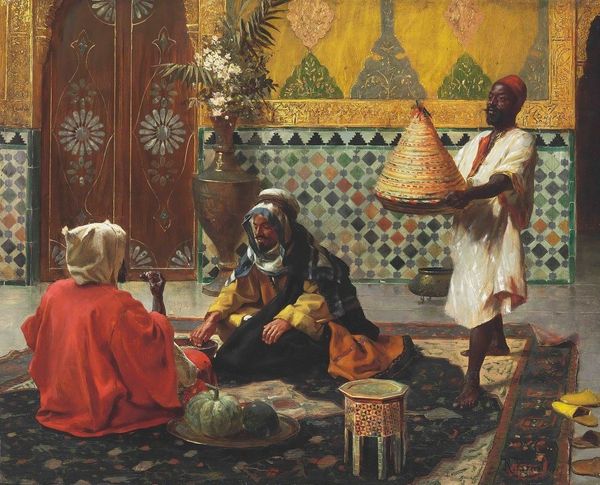
painting, gouache
#
portrait
#
gouache
#
painting
#
gouache
#
oil painting
#
orientalism
#
islamic-art
#
genre-painting
#
watercolor
Copyright: Public domain
Curator: Welcome. We’re standing before "Music in the Harem," a work attributed to Carl Haag. It gives us a glimpse into an imagined private space, rendered, I believe, in gouache. Editor: It strikes me as deeply opulent, even suffocating. All those rich fabrics, the ornate metalwork, the intricate tilework...It feels as though the very air would be thick with incense and unspoken tensions. Curator: Indeed. Works of Orientalism, as this is categorized, must be seen through the lens of colonial power dynamics. These representations weren't about accurate depictions; they reflected European fantasies and projections about the 'East.' The 'harem,' for example, became a symbol loaded with exoticism and mystery. What does it tell us about labor here? Editor: The labour evident here is…mediated. There’s the instrument maker, unseen, but central. And the artisans responsible for the textiles, the carpets, the metalwork, the very tiles themselves. Their unseen labor underpins this scene of leisured luxury. Even the musical performance—a form of skilled labour in itself, dependent on the creation of musical instruments. I also note the shoes cast aside: What materials were used, how long did they take to make? And who is actually enjoying the music, other than the man producing it? Curator: Precisely. The power structures, both visible and invisible, are paramount. The women, seemingly passive participants, highlight the restricted roles assigned to them in this imagined world. Their attire and adornment become visual signifiers, reinforcing notions of oriental luxury and subservience within colonial discourse. And the musician's role in producing leisure… Editor: There is a sense that the very air is being made to be "refined" as the musician entertains, while the women recline with the paraphernalia to engage in shared tobacco enjoyment. The details here – from the specific weave of the rug to the design of the hookah –speak of both local practices but as seen through European expectations, reinforcing those ideas about the Orient as a source of resources but never, on equal footing. Curator: So we should be very aware of how "genre painting" presents these kinds of complicated scenarios in a very palatable visual form, which made its consumption relatively easy at the time. But let’s hope, in our engagement today, that we interrogated its power critically! Editor: Absolutely, looking at it, as more than an artifact. I wonder about its production methods. But in turn, if the consumption habits it references.
Comments
No comments
Be the first to comment and join the conversation on the ultimate creative platform.
